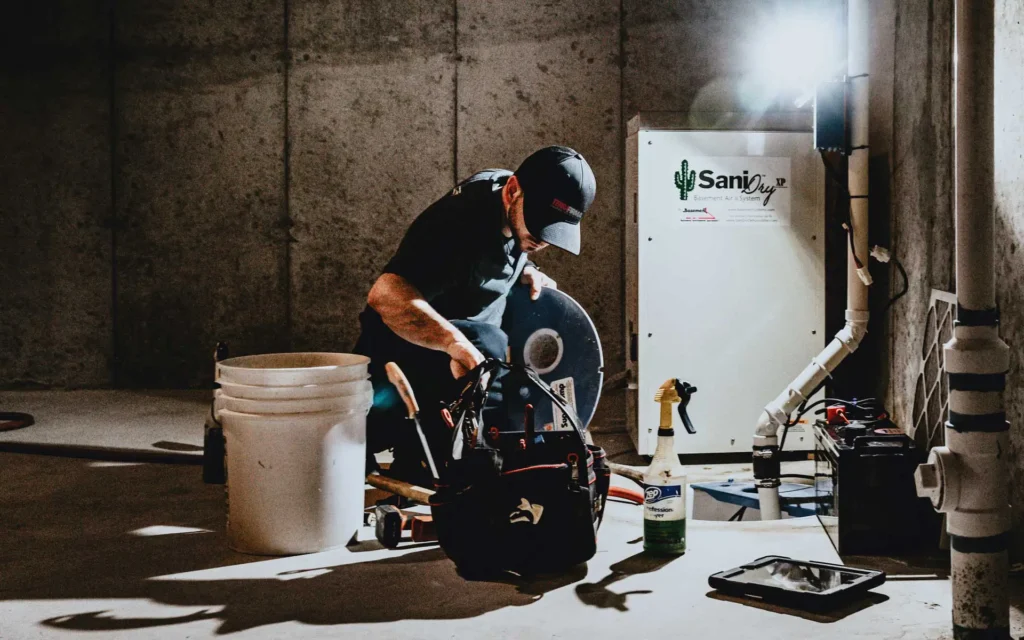Foundation Waterproofing Isn’t Waterproofing
If you’ve heard of TerraFirma, you know we do waterproofing. We waterproof basements, we waterproof foundations, and we waterproof crawl spaces. Everyone knows what we mean when we say waterproof, but that’s not actually what we’re doing.
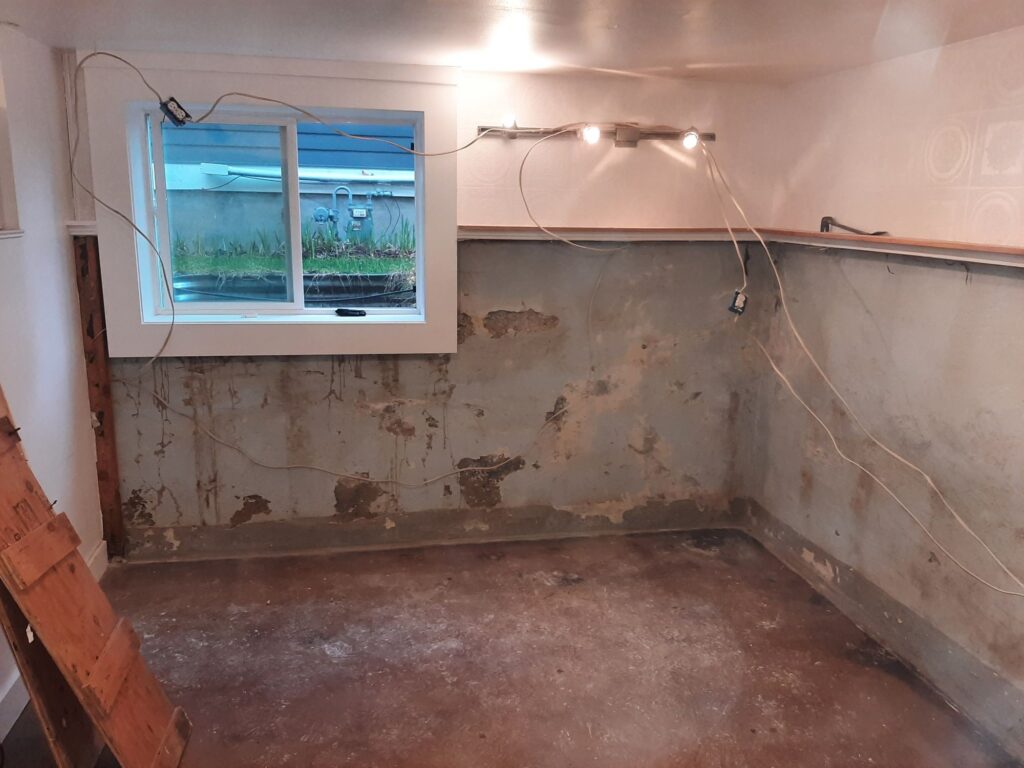
Your House & Water
Most building materials are not made to be submerged in water or even be exposed to it for long periods of time. Building materials like wood, mortar, metal, plaster, carpet, wood flooring, electrical, concrete, and then there’s all our stuff in your house. Nope nope nope.
Water can cause damage, make things grow, or move dirt which are all things we don’t want. That’s why humans invented the envelope.
What is the Home Envelope?
Simply, it’s the barrier that protects the inside of your house from the outside. Homebuilders have gotten pretty good at building this protection barrier with as little material as possible. Over time this envelope gets holes in it and sometimes they are not enough to do serious damage, but sometimes a breach in that barrier can do a lot of damage before you even notice. This is why people do maintenance.
Maintenance of your home envelope often includes replacing your roof, replacing siding, re-painting, replacing windows, etc. All these activities renew those parts of the envelope, sealing up holes that might have been causing damage.
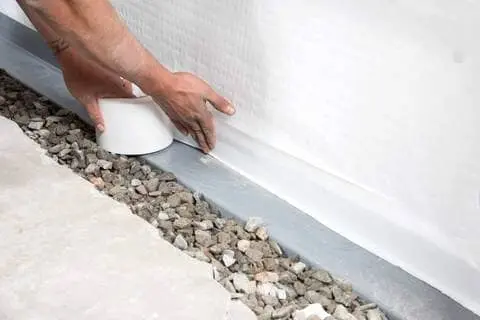
Can I Replace my Foundation?
Yeah, you could replace a foundation. It involves lifting your entire home off the foundation, tearing out that foundation, prepping the ground, pouring a new foundation, and then sealing the new foundation. If you think that sounds exorbitantly expensive, you’re right.

Waterproofing
What do you think of when you hear the word waterproof? You probably think of a scotch-guard spray that you put on canvas or something to make sure water doesn’t get in. The water beads up on the surface and rolls off. That’s great if you’ve got something flexible with high tensile strength, but what if you are working with concrete?
Concrete Cracks
It is a fundamental truth of concrete: Low tensile strength leads to cracks from shear forces. That’s a lot of fancy words. Compression strength is how good something is at handling big weights pushing down on it. Concrete has high compression strength which is why it is good for home foundations. Concrete can handle a heavy house pushing down on it.
Shear forces can pull on concrete or try to make it bend. Concrete does not bend or handle shear forces well, so it cracks. Your house settles unevenly causing shear forces on the concrete and it cracks. It’s going to happen; the question is when.
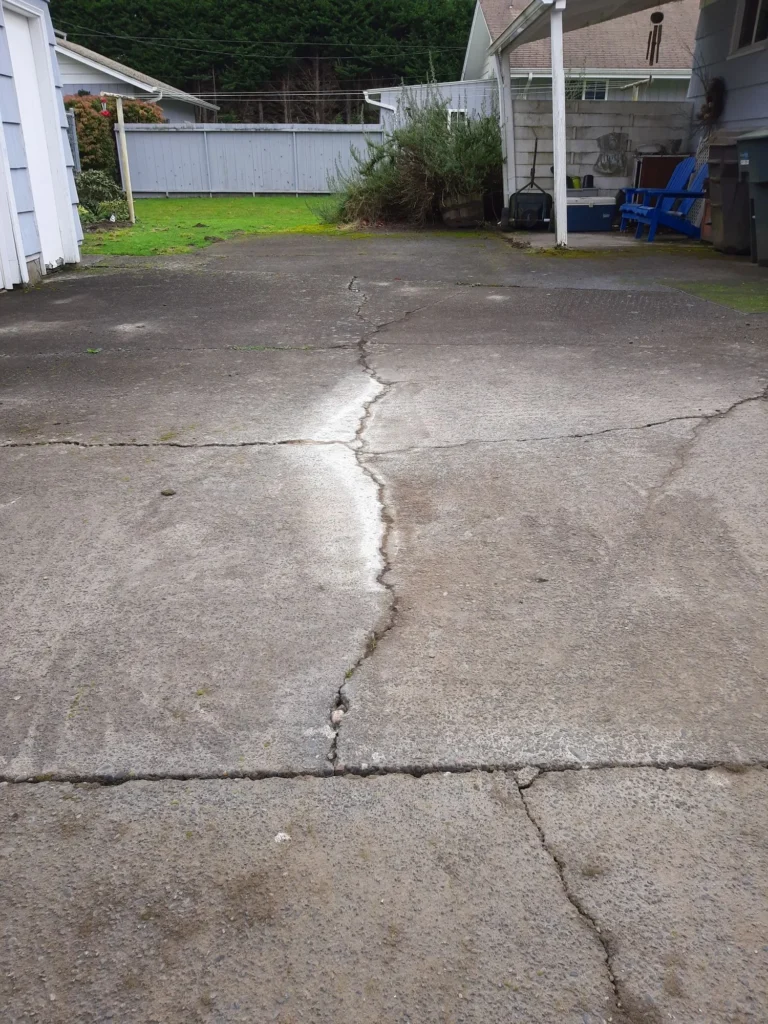
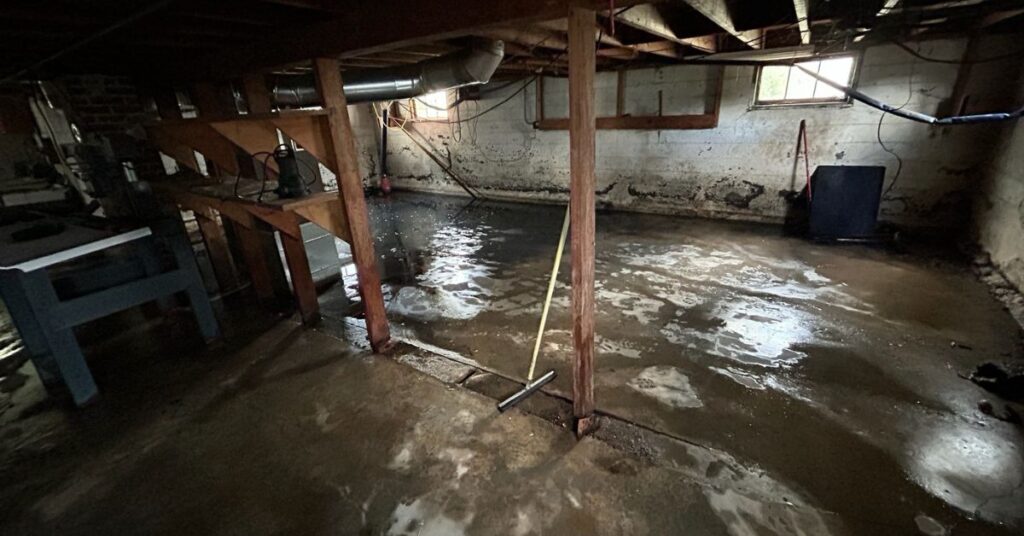
Foundation Waterproofing
Why are we talking about cracking concrete? It’s a common way water gets under your house. We can fix some cracks; some are so bad that the concrete is crumbling. Fixing cracks won’t stop water from getting in because more cracks will form and water will get in other ways. There a lot of companies that advertise they waterproof basements (including us). And though they might do it as well as we do, it’s not really what anyone is doing.
Water Management
As your foundation ages there are more and more options for water to get under your home. Fixing them all is about as expensive and difficult as just pouring a new foundation. What we do is control the water that does come in. If we know it’s going to come in anyway, we might as well send it where it’s not going to damage your house or your stuff.
It’s similar to how cities protect themselves from floods. We provide places for the water to go instead of where it causes damage. Let’s go through the methods of water management for your type of foundation:
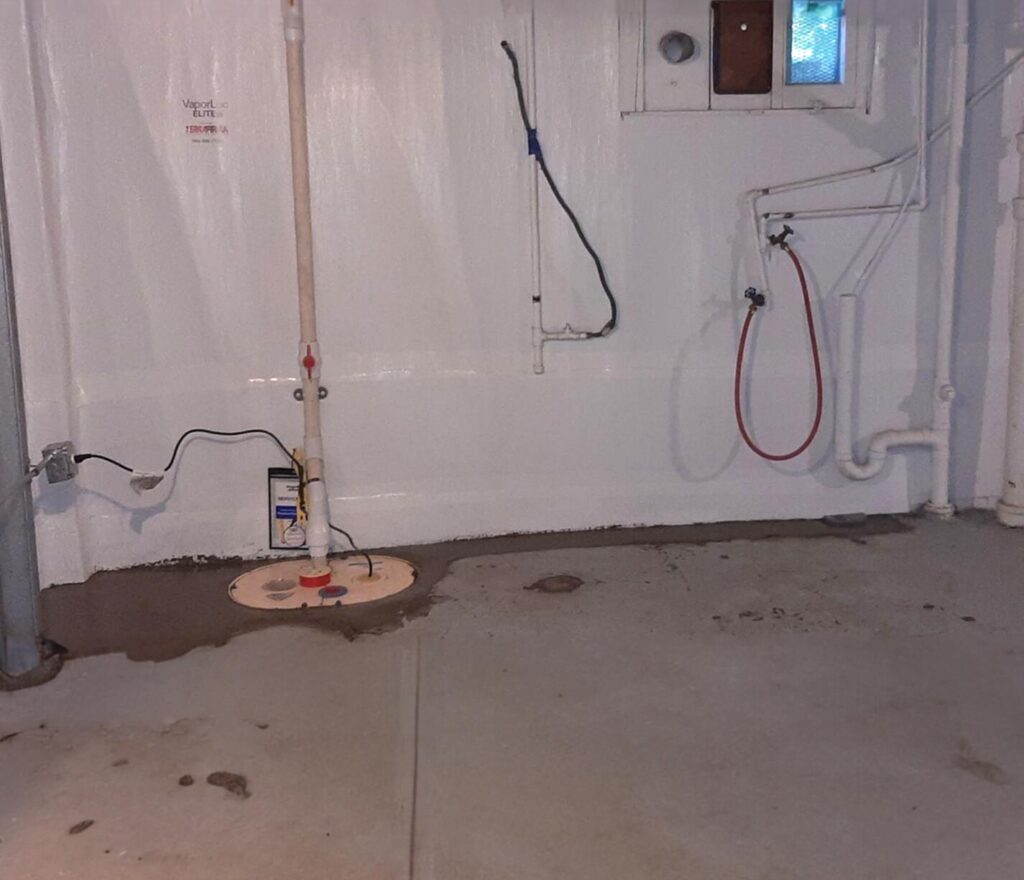
Crawl Space Waterproofing
If you’ve got a cement wall around the bottom of your home and there’s a short space under the first floor you can crawl around in, you have a crawl space. Typically crawlspaces are surrounded by a stem wall with cement anchors in the middle to support the house. It tends to have insulation, pipes and things, and it also tends to be warmer in there year round. It is the perfect place for mold and wood rot if water gets in and sticks around. Builders try to mitigate this by putting vents around the stem wall to allow for air-flow. What’s the best way to manage water flow here?
We have a few options:
River Rock
The most basic solution is to make channels to help the water flow to the lowest point under your home. We fill this with river rock to prevent the dirt from just filling it in.
Sump Pump
In the lowest point(s) of your crawl space we’ll put a bucket in the ground with holes in the sides so the water gets in. If the bucket fills up with water, there are pumps inside that pump the water out to a drain or far away from the house.
Encapsulation
This is the most effective way to protect your crawl space from water. We do a whole bunch of stuff including setting up drainage, insulating, cover it all in plastic, and seal it. This prevents any water from outside your home from getting into your crawl space. Condensation and humidity from your home can still get into your crawlspace so we might install a dehumidifier to remove that humidity. Encapsulation can also mitigate smells, fungus, and mold.
Basement Waterproofing
If you have a living space below ground in your home, you have a basement. These tend to have either poured concrete or cinder block for walls and a poured slab for a floor. There might be support posts on top of the slab to support the middle of the house. Often basements include some basic systems for dealing with water like a sump pump, but these systems are meant to handle basement walls that have no cracks. Once water can reliably get in, these basic systems won’t be enough. How do you waterproof a basement?
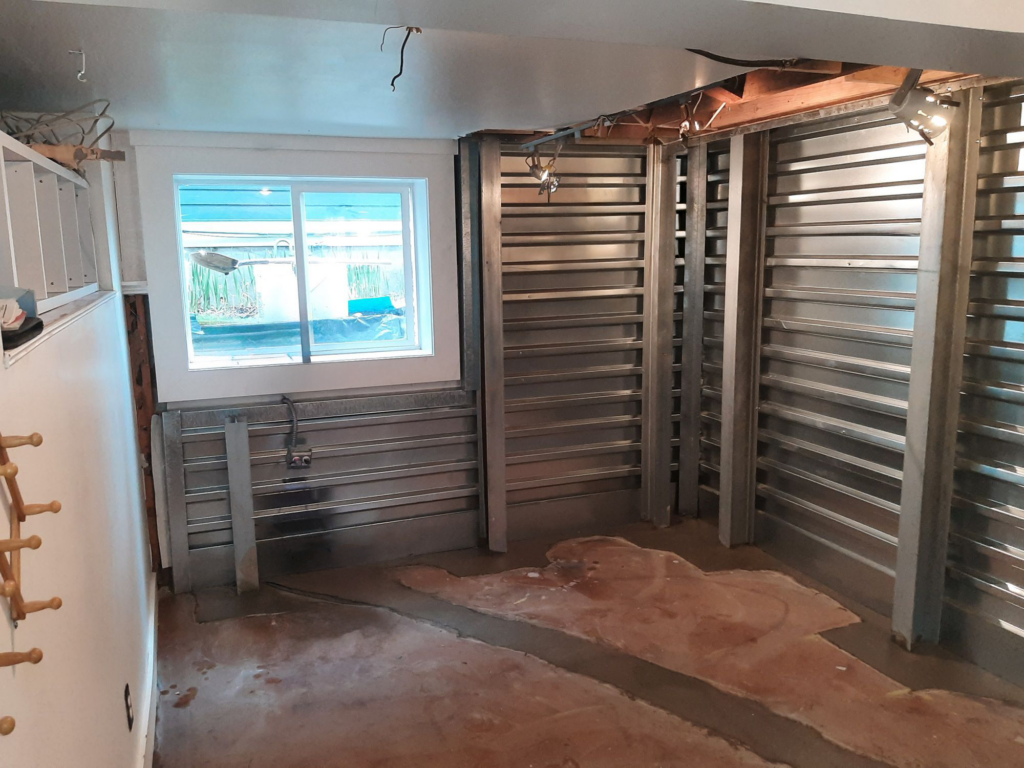
Similar to crawl spaces we have a few options:
- Plastic Linings – We put a plastic lining along the inside of the walls. If water comes through those walls they stop at the lining and drain downwards.
- French Drains – We bury a pipe with holes in it to collect water. If water is coming up from the ground into the basement we will install these below the slab to collect that water and send it to the sump. We might also use these outside the basement if there is a strong source of water flowing to the house on the surface like runoff from a hill.
- Channel Drains – We tend to use these at the base of plastic linings to send the water to a sump. So the water comes in, hits the plastic lining, drains down into the channel and flows to the sump.
- Two Stage – This is a combination of plastic linings/channel drains and French drains. Water is coming from above, below, everywhere! We need to get it out.
- Other options – Depending upon your specific foundation’s needs we will use different products to control the flow of water.
Does TerraFirma waterproof foundations?
Of course we do. As long as by “waterproof foundations” you mean we “protect your home from water.” Not only do we do all this to keep you dry, but we also warranty our work.
You may also be interested in:
If you’ve heard of TerraFirma, you know we do waterproofing. We waterproof basements, we waterproof foundations, and we waterproof crawl spaces. Everyone knows what we mean when we say waterproof, but that’s not actually what we’re doing.
Your House & Water
Most building materials are not made to be submerged in water or even be exposed to it for long periods of time. Building materials like wood, mortar, metal, plaster, carpet, wood flooring, electrical, concrete, and then there’s all our stuff in your house. Nope nope nope.
Water can cause damage, make things grow, or move dirt which are all things we don’t want. That’s why humans invented the envelope.

What is the Home Envelope?
Simply, it’s the barrier that protects the inside of your house from the outside. Homebuilders have gotten pretty good at building this protection barrier with as little material as possible. Over time this envelope gets holes in it and sometimes they are not enough to do serious damage, but sometimes a breach in that barrier can do a lot of damage before you even notice. This is why people do maintenance.
Maintenance of your home envelope often includes replacing your roof, replacing siding, re-painting, replacing windows, etc. All these activities renew those parts of the envelope, sealing up holes that might have been causing damage.

Can I Replace my Foundation?
Yeah, you could replace a foundation. It involves lifting your entire home off the foundation, tearing out that foundation, prepping the ground, pouring a new foundation, and then sealing the new foundation. If you think that sounds exorbitantly expensive, you’re right.
Waterproofing
What do you think of when you hear the word waterproof? You probably think of a scotch-guard spray that you put on canvas or something to make sure water doesn’t get in. The water beads up on the surface and rolls off. That’s great if you’ve got something flexible with high tensile strength, but what if you are working with concrete?

Concrete Cracks
It is a fundamental truth of concrete: Low tensile strength leads to cracks from shear forces. That’s a lot of fancy words. Compression strength is how good something is at handling big weights pushing down on it. Concrete has high compression strength which is why it is good for home foundations. Concrete can handle a heavy house pushing down on it.
Shear forces can pull on concrete or try to make it bend. Concrete does not bend or handle shear forces well, so it cracks. Your house settles unevenly causing shear forces on the concrete and it cracks. It’s going to happen; the question is when.

Foundation Waterproofing
Why are we talking about cracking concrete? It’s a common way water gets under your house. We can fix some cracks; some are so bad that the concrete is crumbling. Fixing cracks won’t stop water from getting in because more cracks will form and water will get in other ways. There a lot of companies that advertise they waterproof basements (including us). And though they might do it as well as we do, it’s not really what anyone is doing.

Water Management
As your foundation ages there are more and more options for water to get under your home. Fixing them all is about as expensive and difficult as just pouring a new foundation. What we do is control the water that does come in. If we know it’s going to come in anyway, we might as well send it where it’s not going to damage your house or your stuff.
It’s similar to how cities protect themselves from floods. We provide places for the water to go instead of where it causes damage. Let’s go through the methods of water management for your type of foundation:
Crawl Space Waterproofing
If you’ve got a cement wall around the bottom of your home and there’s a short space under the first floor you can crawl around in, you have a crawl space. Typically crawlspaces are surrounded by a stem wall with cement anchors in the middle to support the house. It tends to have insulation, pipes and things, and it also tends to be warmer in there year round. It is the perfect place for mold and wood rot if water gets in and sticks around. Builders try to mitigate this by putting vents around the stem wall to allow for air-flow. What’s the best way to manage water flow here?
We have a few options:
River Rock
The most basic solution is to make channels to help the water flow to the lowest point under your home. We fill this with river rock to prevent the dirt from just filling it in.
Sump Pump
In the lowest point(s) of your crawl space we’ll put a bucket in the ground with holes in the sides so the water gets in. If the bucket fills up with water, there are pumps inside that pump the water out to a drain or far away from the house.
Encapsulation
This is the most effective way to protect your crawl space from water. We do a whole bunch of stuff including setting up drainage, insulating, cover it all in plastic, and seal it. This prevents any water from outside your home from getting into your crawl space. Condensation and humidity from your home can still get into your crawlspace so we might install a dehumidifier to remove that humidity. Encapsulation can also mitigate smells, fungus, and mold.
Basement Waterproofing
If you have a living space below ground in your home, you have a basement. These tend to have either poured concrete or cinder block for walls and a poured slab for a floor. There might be support posts on top of the slab to support the middle of the house. Often basements include some basic systems for dealing with water like a sump pump, but these systems are meant to handle basement walls that have no cracks. Once water can reliably get in, these basic systems won’t be enough. How do you waterproof a basement?
Similar to crawl spaces we have a few options:
- Plastic Linings – We put a plastic lining along the inside of the walls. If water comes through those walls they stop at the lining and drain downwards.
- French Drains – We bury a pipe with holes in it to collect water. If water is coming up from the ground into the basement we will install these below the slab to collect that water and send it to the sump. We might also use these outside the basement if there is a strong source of water flowing to the house on the surface like runoff from a hill.
- Channel Drains – We tend to use these at the base of plastic linings to send the water to a sump. So the water comes in, hits the plastic lining, drains down into the channel and flows to the sump.
- Two Stage – This is a combination of plastic linings/channel drains and French drains. Water is coming from above, below, everywhere! We need to get it out.
- Other options – Depending upon your specific foundation’s needs we will use different products to control the flow of water.
Does TerraFirma waterproof foundations?
Of course we do. As long as by “waterproof foundations” you mean we “protect your home from water.” Not only do we do all this to keep you dry, but we also warranty our work.
